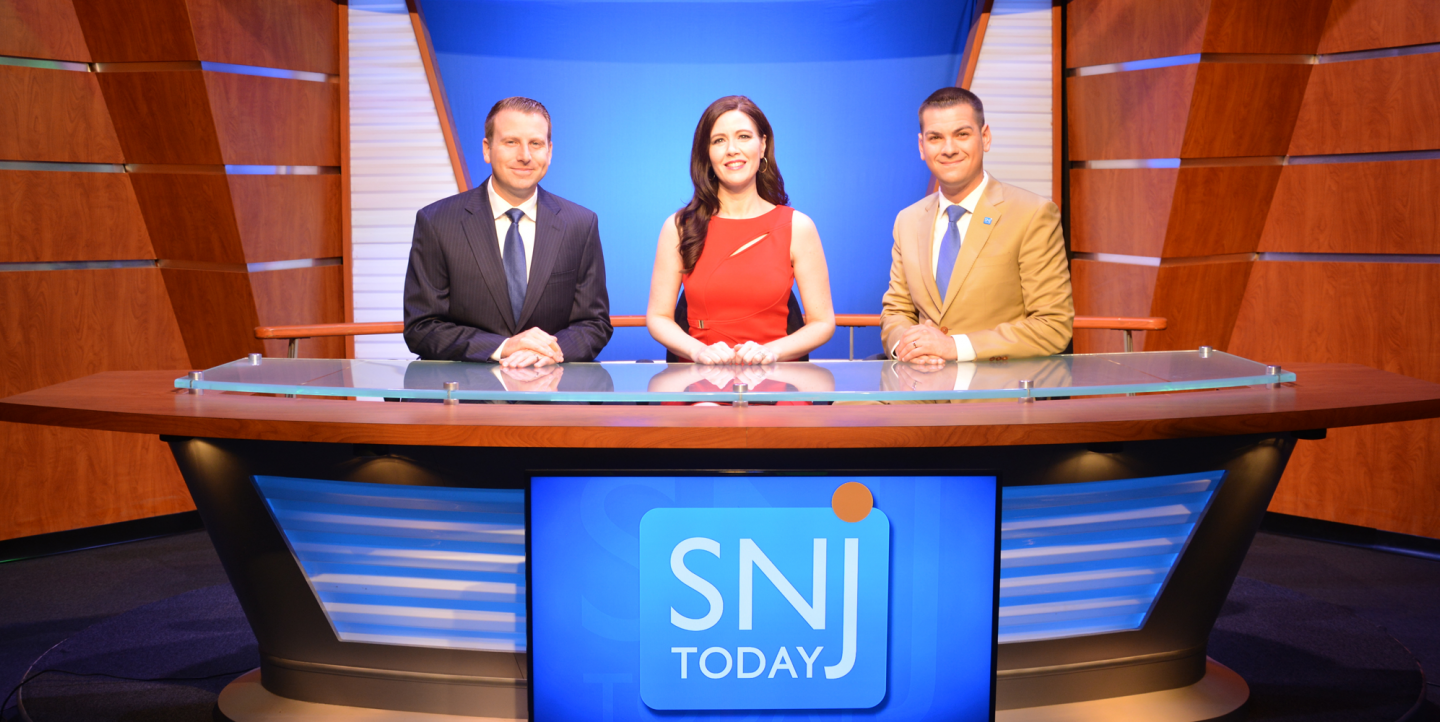Although southern New Jersey is located within the Philadelphia market area, citizens face a drought of local news access and coverage. SNJ Today was built on the idea that good news stories about our communities were not getting told. Just under three years old, SNJ Today boasts the only television news broadcast for southern New Jersey, in addition to radio news and local cable shows.
The backgrounds of the staff are diverse. Several of us are veterans of a recently shuttered small network news affiliate, while others are an original band of publishers of a small weekly community newspaper. But, like many newsrooms, we have several employees that are brand new to the business. We focus on presenting positive news about our community and look at new and innovative ways to do it.
Our problem: How to pull together all of our different journalistic specialties (TV, radio, print, digital) and work as one newsroom and not 35 individual journalists? We knew it was a challenge — we were working in silos, independently and inefficiently. Often, a reporter from the print team and one from the television broadcast team would show up at the same story or event, working individually or stories created by reporters never made it to the radio. We knew that there was a better, more efficient way, but didn’t know how to make that change nor how to get our staff to embrace it.
Enter ICFJ Knight Fellow Nasr ul Hadi, with answers to the questions we had been asking ourselves for months.
How do we streamline our newsroom so that each of our outlets — print, TV, radio and digital — are all sharing the relevant stories, optimized for each outlet? Hadi introduced to us the term “omnimedia,” the name for what we were hoping to achieve.
He also gave us the roadmap to get there.
The SPADE newsflow Hadi is developing takes all major newsroom functions – each of which we were doing separately — and organizes them into four work stages or Hubs. Each Hub is further broken down into deliverables or Desks.
-
We begin with Sourcing, the conception and planning of a story — evaluating, researching and assigning an idea.
-
The next stage, or “hub,” as it is known in the SPADE model, is Production. This is where the content ideas are brought to life across the multiple specialty desks in order to create the elements of the story.
With Nasr's help, we adapted the model to fit our resources. SPADE is flexible and can be customized for newsrooms of all sizes. For example, we took the design desk, which is responsible for the creation of visual elements, graphics, tickers and illustrations, and combined it with the interactives desk, where the responsibility for creating interactives and news apps lies. Since we're not yet creating many of these elements on a daily basis, it made sense for us to combine and streamline.
Note that this means TV, print and web designers will now work on the same desk, learning from each other on the job, eventually giving our audience a more homogenous and integrated experience across platforms.
-
The elements created at the Production Hub are then taken by the Assembling Hub. This is where our experts in packaging for different media grab the elements that make sense for their respective outlets and repurpose or stitch them all together for publication or broadcast.
-
The Distribution Hub makes the output more than just another story sent into the newsverse. The team publishes each piece across multiple social media channels, then analyzes it’s engagement to determine if this is a “one-and-done” story or if it has the potential to evolve into a campaign around sustained storytelling.
The process of setting our newsroom into these hubs and desks has been a long and introspective one for our company. Hadi and I spoke weekly for months, evaluating our employees to understand what they're doing now and what potential they have in the future.
As a newer company, I found that determining potential newsroom leaders was key, because at this point there were a lot of workers with little to no oversight and that made simple tasks take longer than they should have.
From there, we created a brand new organizational chart — mapping employees to the desks that they have the most skills in or are doing the most work in.
By walking me through this process, Hadi helped us define the positions we were missing. For example, on the Distribution Hub, we were incredibly light because no one was focused on these tasks, analytics in particular. While we recognize the importance of performance data, we didn’t have a single person responsible for interpreting and utilizing it. With Hadi’s help and the SPADE newsroom plan, we reassigned someone to focus on our newsroom analytics.
Now that we have set up the hubs and assigned employees to their respective desks, it’s time to roll out the changes in our newsroom. We’ve set up a plan of how to inform the staff. Hadi has cautioned us to be prepared for failure. Transitions are hard, and some employees may not like change. The key is preparation, communication and ensuring that employees see the positive possibilities these changes can bring.
Megan Wolf is news manager at SNJ Today.
Nasr ul Hadi works with media organizations in India to improve access to quality information and journalism, by developing and expanding the use of new technologies and digital-led best practices. Learn more about his work as an ICFJ Knight Fellow here.
Photo courtesy of SNJ Today.

